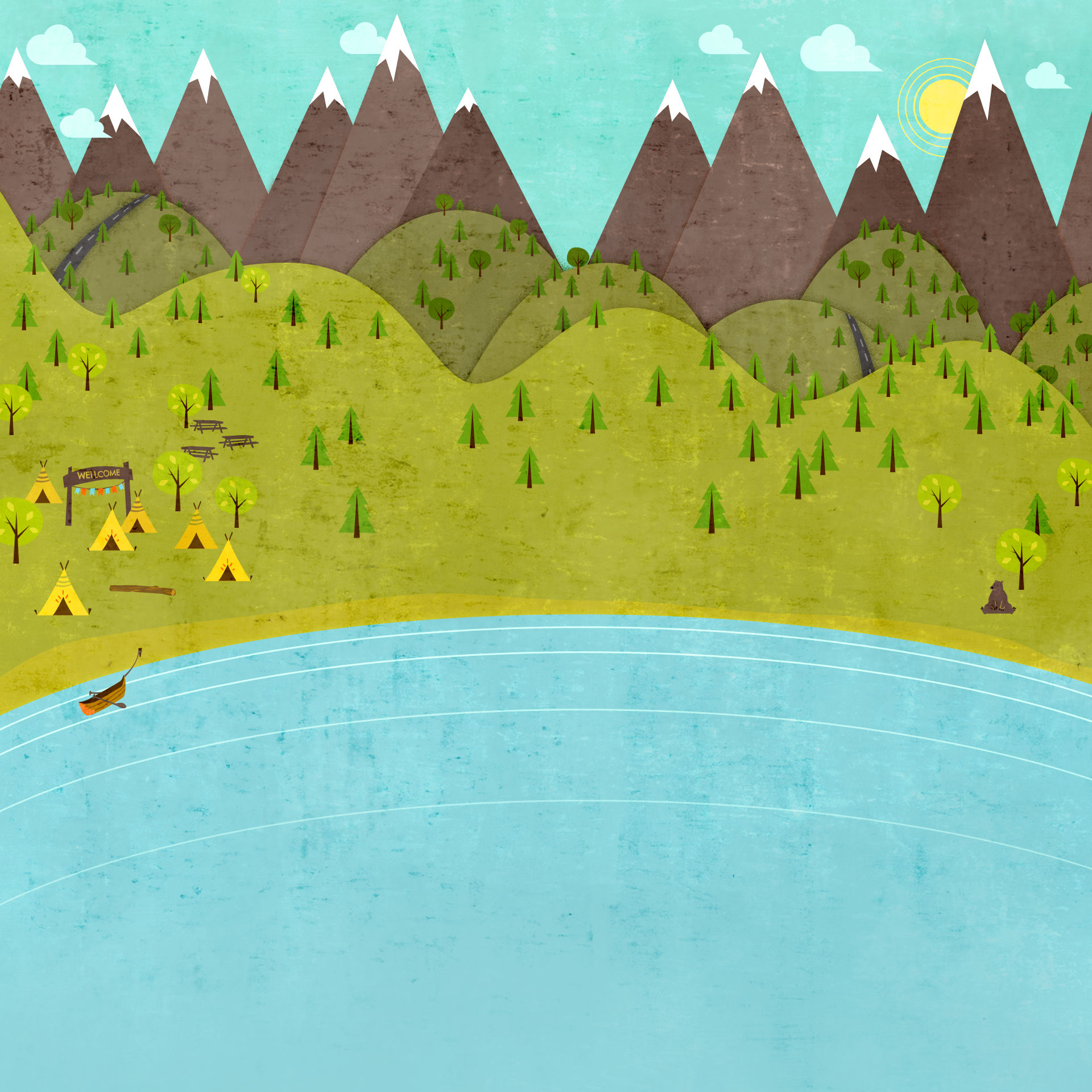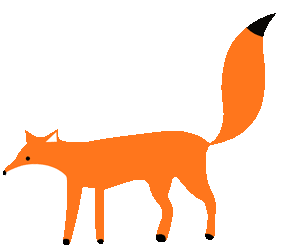

Crooked Wings still learn to fly
Spinal Fusion
The information below has been gleened from the following website.
The goals of scoliosis surgery are threefold:
-
Straighten the spine as much as possible in a safe manner
-
Balance the torso and pelvic area
-
Maintain the correction long-term
It takes a two-part process to accomplish these goals:
-
Fusing (joining together) the vertebrae along the curve
-
Supporting these fused bones with instrumentation (steel rods, hooks, and other devices) attached to the spine
There are many surgical variations that use different instruments, procedures, and surgical approaches to treat scoliosis. All of the operations require meticulous skill. In most cases, success depends less on the type of operation than on the skill and experience of the surgeon.
The cause of scoliosis often determines the type of procedure. Other determinants include the location of the curve (thoracic, thoracolumbar, or lumbar); single, double, or triple curves, and any rotation that may be present; and how large the curve is.
Parents of patients or adult patients should not be shy in asking the surgeon and hospital about their experience with the specific procedures being considered.
SURGICAL CANDIDATES
Idiopathic Scoliosis. Surgery is usually recommended for the following children and adolescents
with idiopathic scoliosis:
-
All young people whose skeletons have matured, and who have a curve greater than 45 degrees.
-
Growing children whose curve has gone beyond 40 degrees. (There is still some debate, however, about whether all children with curves of 40 degrees should have surgery.)
Neuromuscular Scoliosis (such as meningomyelocoele and cerebral palsy). If performed, surgery is
done when curving has progressed to 40 degrees or more in patients younger than 15 years old.
However, this patient group is considered to be at increased surgical risk, particularly those patients with feeding problems, malnourishment, or respiratory difficulties due to the scoliosis. They also have an increased risk of bleeding complications.
Congenital Scoliosis. These children are at a higher risk of neurological (nerve) injury when having surgery. However, chances for success are higher when surgery is performed at a younger age.
Adult Scoliosis. Due to the increase chance of complications, there is more reluctance to perform surgery on this patient group.
Procedures will differ depending on whether a child has idiopathic scoliosis, or scoliosis due to muscle and nerve disorders (such as muscular dystrophy or cerebral palsy). In the latter cases, children also need a team approach to reduce their risks for serious complications.
PREOPERATIVE CARE
Before the operation, a doctor conducts a complete physical examination to determine leg lengths, muscle strength, lung function, and any postural abnormalities. The patient receives training in deep breathing and effective coughing to avoid lung congestion after the operation. The patient should also receive training in turning over in bed in a single movement (called log-rolling), before the operation. Psychological intervention, using cognitive-behavioral methods that help young patients cope, may be very helpful in reducing anxiety and pain after surgery.
Patients are encouraged to donate their own blood before the operation, for use in possible transfusions. The patient should have no sunburn, rashes, or sores on the back before the operation. These conditions could increase the risk for infection.
FUSION
Most scoliosis operations involve fusing the vertebrae. The instruments and devices used to support the fusion vary, however.
In the fusion procedure, the surgeon will:
-
Slice flaps to expose the backs of the vertebrae that lie along the curve.
-
Remove the bony outgrowths along the vertebrae that allow the spine to twist and bend.
-
Lay matchstick-sized bone grafts vertically across the exposed surface of each vertebra, being careful that they touch adjoining vertebrae.
-
Fold the flaps back to their original position, covering the bone grafts.
-
These grafts will regenerate, grow into the bone, and fuse the vertebrae together.
For Post Surgery discussions please see: http://helpformyscoliosis.com/2011/08/scoliosis-surgery-recovery/
Graft Materials.
A surgeon takes bone grafts from the patient's hip, ribs, spine, or other bones (these grafts are called autografts). This is the best quality bone. However, because autografts are taken directly from the scoliosis patient, the operation is longer and the patient has more pain afterward. Researchers are investigating allografts, bone grafts taken from another living person or a cadaver. This would reduce the pain and duration of the operation. Allografts, however, pose an increased risk for infection from the donor.
Some surgical centers now perform spinal fusions in adults using a biologically-manufactured human bone protein instead of bone grafts. RhBMP-2 (INFUSE Bone Graft) contains a bone morphogenetic protein (BMP) that helps the body grow its own bone. A surgeon inserts the protein into a pair of thimble-like cages, which are implanted between the spinal vertebrae. The cages help stabilize the spine, while the protein prompts new bone growth. Doctors hope that this new procedure can eliminate the pain of autografts and the risk of infection of allografts. Results from preliminary studies have been promising. BMP treatments are currently approved only for adults.
Another recent innovation is the use of bioactive glass in place of an allograft or autograft. In a study in France, bioactive glass was proven as effective as bone grafts in idiopathic scoliosis patients undergoing fusion surgery. There were fewer complications with the bioactive glass procedures. Further studies will have to determine if this material is as effective long-term as traditional bone grafts are.
Healing
The healed fusions harden in a straightened position to prevent further curvature, leaving the rest of the spine flexible. It takes about 3 months for the vertebrae to fuse substantially, although 1 - 2 years are required before fusion is complete. Fusion stops growth in the spine, but most growth occurs in the long bones of the body (such as in the legs), anyway. Patients will most likely gain height from both growth in the legs and from the straighter spine.
Patients may walk at a slightly slower pace after fusion, but balance may improve, and sports activities are not restricted after the procedure.
INSTRUMENTATION
Harrington Procedure. Until 10 years ago, the standard instruments used in fusion procedures were those of the Harrington procedure, first developed in the 1960s:
-
To support the fusion of the vertebrae, the surgeon uses a steel rod, extending from the bottom to the top of the curve. (More than one rod may be used depending on the type of curve, and whether outward curvature of the spine is present.)
-
The rod is attached by hooks that are suspended from pegs inserted into the bone.
-
Similar to changing a tire, the steel rod is jacked up and then locked into place to support the spine securely. The surgeon is then ready to fuse the vertebrae together.
-
After this operation, patients must wear a full body cast and lie in bed for 3 - 6 months until fusion is complete enough to stabilize the spine.
-
After 1 - 2 years, the steel rod is not really necessary, but it is almost always left in place unless infection or other complications occur.
The Harrington procedure is very difficult to undergo, particularly for young people, and although the operation can achieve a 50% correction of the curve, studies have reported a 10 - 25% loss in this correction over time. The procedure does not correct the rotation of the spine and, therefore, does not improve an existing rib hump that was caused by the rotation. The operation does not interfere with normal pregnancies and deliveries later in life.
Certain complications may occur from this procedure:
-
About 40% of Harrington patients have a condition called the flat back syndrome, because the procedure eliminates normal lordosis (the inward curving of the lower back). Flat back syndrome from the Harrington procedure does not cause any immediate pain. In later years, however, the disks may collapse below the fusion, making it difficult to stand erect, and the condition can cause significant pain and emotional distress.
-
Studies have reported that 5 - 7 years after their surgery, between a fifth and a third of patients who had the Harrington procedure experienced low back pain. In such cases, however, the pain was not severe enough to interfere with normal activities and did not require additional surgery.
-
Children younger than age 11 whose skeleton is immature and who have the Harrington procedure have a fairly high risk for a specific curve progression called the crankshaft phenomenon. This condition occurs when the front of the fused spine continues to grow after the procedure. The spine cannot grow longer, so it twists and develops a curvature. However, in one study that followed patients for 5 - 16 years, crankshaft curve progression was moderate, with the Cobb angle averaging 9 degrees and rotation averaging 7 degrees.
Cotrel-Dubousset Procedure. The Cotrel-Dubousset procedure corrects not only the curve but also possibly rotation, and it does not cause flat back syndrome.
With this procedure, a surgeon cross links parallel rods for better stability in holding the fused vertebrae. Patients often go home in 5 days and may be back in school in 3 weeks.
The Texas Scottish-Rite Hospital (TSRH) Instrumentation. The Texas Scottish-Rite Hospital (TSRH) instrumentation is similar to the Cotrel-Dubousset procedure in that it uses parallel rods and other devices that reverse rotation as well as improve curvature. TSRH, however, uses smooth rods and hooks that are designed to make removal or adjustment easier later on if complications arise. Complications are similar to the Cotrel-Dubousset procedure.
Additional Forms of Instrumentation. Other instrumentation procedures have refined the hardware used in the Harrington and Cotrel-Dubousset operations. Some, but not all, are listed below:
-
After surgeons developed Luque instrumentation to help maintain normal lordosis, experts hoped that bracing would not be needed. Several studies showed, however, that without braces, correction was lost after this operation, and the procedure may have a higher risk for spinal cord injury than other standard procedures. Luque instrumentation is used primarily in people whose scoliosis is due to problems of nerves and muscles, such as in children with cerebral palsy.
-
Wisconsin segmental spine instrumentation (WSSI) is as safe as the Harrington rod and nearly as strong as the Luque instrumentation.
Instrumentation for Anterior Approach. The anterior approach, in which the surgeon performs the operation by opening the chest wall, requires specific hardware. Halm-Zielke instrumentation, for example, uses TSRH instrumentation with bone grafts constructed from ribs to prop open the spaces between the disks. It allows true three-dimensional curve correction. However, it does not solve specific problems -- higher risks for kyphosis (an outward curve) and pseudoarthrosis (a false joint at the fusion site). Variants using two rod systems, fusion cages, or other instruments appear to improve this procedure.
APPROACHING THE SPINE
Posterior Approach (Through the Back). Many surgeons use a posteriorapproach for scoliosis, which reaches the surgical area by opening the back of the patient. It has been the gold standard for decades and is generally used with Harrington instrumentation. The posterior approach has advantages and disadvantages:
-
Advantages. Surgeons are familiar with it, so fusion rates are excellent, curve correction is good, and it has few complications.
-
Disadvantages. Preadolescent children are at risk for the crankshaft phenomenon (a worsening of the curve) later on. (Newer posterior instrumentation, such as the Isola instrumentation, may prevent this occurrence.) The posterior approach also does not always correct hypokyphosis (the loss of normal outward curvature) in the thoracic (upper) spine. The procedure is not always effective for curves in the thoracolumbar region (where the upper and lower spine meet) and may cause spinal abnormalities there.
Anterior Approach (Through the Front). Increasingly, surgeons are using the anterior approach, in which the surgeon performs the operation through the chest wall (called a thoracotomy). With the anterior approach, the surgeon makes an incision in the chest, deflates the lung, and removes a rib in order to reach the spine. This rib can be used during the operation as a strut to support the spine. It also may be repositioned within the patient until it is used for bone grafting during fusion.
The anterior approach also has its advantages and disadvantages:
-
Advantages. Because the frontal approach allows the procedure to be performed higher up in the spine than with standard procedures, the patient may have a lower risk for lower-back injury later on. In addition, transfusion rates are much lower with the anterior approach. With increasing experience, the anterior approach is as effective as the posterior approach.
-
Disadvantages. It is a more recent procedure than the posterior approach, and, among inexperienced surgeons, carries a higher risk for complications than in the more standard posterior approach. Poorer lung function after surgery has been noted, possibly because the wide chest incision impairs the chest muscles, which can affect lung function afterward. Hardware failure rates may also be higher in the anterior approach than in the posterior approach. Increasing experience and newer hardware designs are reducing many of these problems.
The Combined Anterior-Posterior Approach. The combination approach uses an anterior approach first, which allows better correction of the problems. The fusion part of the operation is done with the posterior approach. This is a very long and complex procedure. It appears to be safe, however, and is proving to be useful, even in very young patients, for preventing the crankshaft phenomenon. It also may correct large rigid curves and specific severe curves in the thoracic spine.
Researchers are evaluating new approaches to treating thoracic scoliosis in adolescents and children. A new device, the vertical expandable prosthetic titanium rib (VEPTR), is showing promise in the treatment of severe congenital scoliosis with chest deformities. The device, which is implanted through surgery, can be adjusted as the child grows. VEPTR expands the thoracic cavity, thereby correcting the curvature and allowing spinal, thoracic, and lung growth. Several studies to date have shown this device is safe and effective in improving breathing problems and appearance in young children.
Video-Assisted Thoracoscopic Surgery (VATS). The anterior thoracoscopic surgery uses a video-assisted anterior approach and recently-developed spinal instrumentation. Some studies have found no significant differences between the anterior thoracoscopic and the traditional posterior approach in terms of kyphosis, coronal balance, or tilt angle.
This procedure is complicated, and few surgeons are trained to perform it. The surgery is generally used only for single curves in the upper back, or for patients with a curve in the upper back and a compensating curve in the lower back. Some surgeons are now able to operate on areas below the diaphragm, including the lumbar spine. The patients must still wear a brace for 3 months after surgery. Long-term studies are required to compare results of VATS to those of standard procedures.
Advantages of the anterior thoracoscopic approach include fusion of fewer vertebrae, less blood loss, quicker recovery time (often out of bed in 2 days), better cosmetic results, and lower transfusion rate. However, the operative time is nearly twice as long as that of the posterior approach.
These new treatments have shown some early positive results, but more research will be needed to determine their true value.
COMPLICATIONS OF ALL PROCEDURES
Complication rates are high with any of the procedures, including the standard Harrington method and the newer Cotrel-Dubousset procedure. A survey of fusion procedures done between 1993 and 2002 for idiopathic scoliosis found the complication rates were nearly 15% in children, and 25% in adults.
Complications for all procedures include allergic reactions to anesthesia and the following:
Bleeding. Standard procedures increase the risk for major blood loss during the procedure. Patients are encouraged to donate blood before the operation for use in possible transfusions. Children sometimes require more than one transfusion following surgery. Researchers are investigating various methods for reducing the need for transfusions, such as the use of preoperative erythropoietin (rhEPO), which increases production of red blood cells in the bone marrow. Newer endoscopic techniques are reducing the need for transfusions.
Infection. Infection is always a risk with any operation. One study reported changes in the immune system for about 3 weeks after surgery, which indicated a greater risk for infection. Researchers recommended being very vigilant for signs of infection, including those in the pancreas and urinary tract. Doctors also recommend antibiotics, given by injection for 2 - 5 days after surgery and by mouth for 1 - 2 weeks longer.
Nerve Damage. Patients often worry about neurological injuries, but the risk is actually very low. In general, nerve injury occurs in 1% of patients, with the risk highest in adults. If neurological damage occurs, it most often causes muscle weakness. Paralysis is very rare and can be prevented using monitoring techniques during the operation. Nearly all monitoring procedures use a so-called wake-up test, in which the patient is brought out of anesthesia during or at the end of the procedure and assessed for sensations to be sure no injury has occurred. One simple method is to wake patients up in the middle of their operations and ask them to wiggle their toes. More sophisticated methods measure the electrical activity of the spinal cord; if the monitor indicates a fall in electrical response and possible injury, the surgeon makes adjustments to avoid further damage to the spinal cord.
Pseudoarthrosis. If the fusion fails to heal, pseudoarthrosis, a painful condition in which a false joint develops at the site, may develop. In one study, teenagers who smoked and heavier adolescents (over 154 pounds) who had hyperkyphosis (hunchback) were at higher risk for this complication. The anterior approach may pose a higher risk for pseudoarthrosis. One study reported that pseudoarthrosis may be undiagnosed, and rates may average 20% after surgery, therefore acting as a major contributor to post-surgery pain.
Disk Degeneration and Low Back Pain. Fusion in the lumbar area produces great stress on the lower back and eventually can cause disk degeneration. Loss of trunk mobility, balance, and muscle strength from surgical treatments can also cause lower back pain and chronic problems in future years. Patients who are surgically treated with fusion techniques lose flexibility; their back muscles may be weakened if they were injured during surgery. In most cases, however, the consequences are mild to moderate.
Lung Function. Some patients may develop serious lung problems after surgery. These complications are highest in children whose scoliosis is due to neuromuscular problems, such as spina bifida, cerebral palsy, or muscular dystrophy. Lung problems can develop up to 1 week after surgery. Lung function may not become completely normal until 1 - 2 months after surgery.
Other Complications. Other problems can include, but are not limited to, the following:
-
Hooks dislodging or a fused vertebra fracturing
-
Gallstones
-
Pancreatitis (inflammation of the pancreas). Among adolescents, this complication tends to occur more often among those who are older or who have a lower body mass index.
-
Intestinal obstruction



